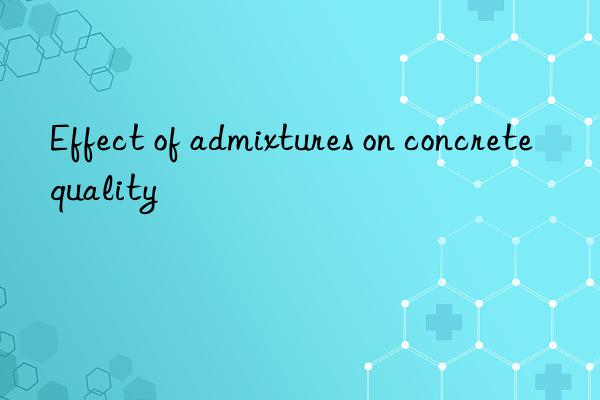
The wide application of concrete admixtures is the primary symbol of modern concrete engineering. Some quality problems of the mixture during construction are usually related to the viscosity, thixotropy, dilatancy and other characteristics of modern concrete mixtures. However, there are many factors that affect the quality of concrete projects, most of which are application problems. Therefore, there are several points that should be paid attention to when selecting and using water-reducing agents: (1) It is inappropriate to use product "generation" and "grade" to evaluate water-reducing agents, because any product has advantages and disadvantages, and there is no good or bad. Good, as long as it is suitable or inappropriate; (2) The dosage of concrete admixtures is very small, especially the polycarboxylic acid-based high-efficiency water-reducing admixture, whose dosage is only 0.2% to 0.5% of the cement dosage. Its products are produced through molecular design and scientific technical processes. The raw materials are of high purity. As long as they are qualified products produced according to the design, their quality is stable. Cement is very different. Currently, commercially available cements are generally too fine, require large amounts of water, have high C3A content in the clinker, have too high or too low alkali content, are optimized based on SO3 condensation time only, and have factory cement temperatures that are too high, etc. etc.; (3) The influence of mineral admixtures and aggregates cannot be ignored. The dominant aspect of compatibility between cement and admixtures should be between cement and concrete. However, the current basic research in this area is very weak, the mechanism is unclear, and the formation method is unscientific, which brings many contradictions to the project. In particular, the simple concept of strength has caused many doubts about the actual quality of concrete. Some concrete companies do not adhere to their own material selection criteria for large, important and important raw materials such as cement and sand, but try to solve their own big problems with a small amount of additives. This is actually putting the cart before the horse and should be recommended to concrete companies. Composite cement or mixed material cement supplied by cement plants after optimization; cement companies should produce cement according to the needs of concrete companies. This is the basic way to solve the problem.
Several important issues that should be paid attention to during the use of concrete admixtures: (1) Ready-mixed concrete companies produce continuously, and the quality of sand and gravel fluctuates, and the project requires concrete workability and strength grade are also different, resulting in the production mix ratio and additive dosage need to be adjusted in time, so polycarboxylic acid additives with a solid content (water-reducing component) of about 10% to 12% should be used to facilitate management and control; (2) Newly put into production The admixtures used must be tested in advance for compatibility with cement, concrete workability and strength, and verified to meet the concrete production quality requirements; (3) Because both naphthalene-based and polycarboxylic acid-based superplasticizers have added functionality The retarding and air-entraining components have problems with the uniformity of dissolution among each other, and phenomena such as stratification, aggregation, and fermentation occur over time and temperature. This will have a serious impact on the workability and strength of concrete, so admixtures that have not been used for more than 1 month must undergo relevant experimental verification; (4) The mixing time during production must be appropriately selected, especially during low temperature or winter construction. , the mixing time should be extended; (5) During the transportation of ready-mixed concrete, attention should be paid to maintaining the homogeneity of the concrete and preventing delamination. At the same time, attention should be paid to the characteristics such as delayed initial setting time and loss of slump.
</p



 微信扫一扫打赏
微信扫一扫打赏
